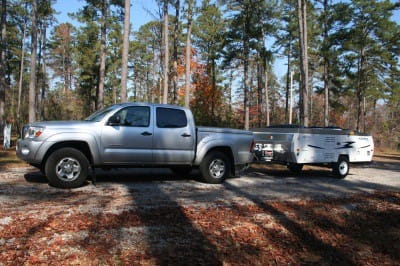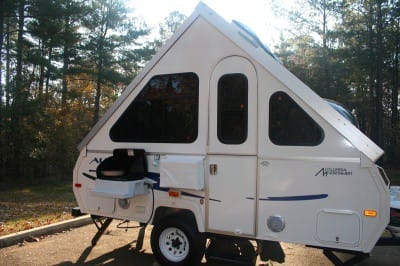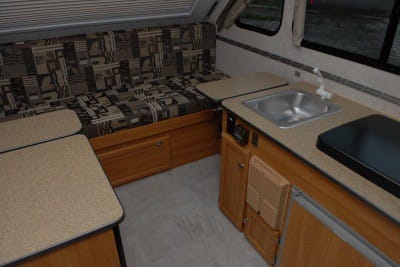
Recreational vehicles (RVs) have become extremely popular across the U.S. in recent years. Go just about anywhere and the roads are sprinkled with travel trailers and motor homes. During peak seasons, few if any vacancies can be found in campgrounds nationwide; these are filled with RVs.
And there is good reason why this is the case. RVs afford a great deal of mobility and comfort. There is no need to pack and unpack every day if a different venue is on the agenda. Everything is in the RV, so all the user must do is crank up and go. And some of these rigs, particularly the bigger units, offer all the amenities of home. Whether employed for use as a hunting or fishing camp, a family road trip, a mobile base for business use, or just an instrument of escape from the routine, RVs serve well. They can be quite marvelous.
But there are drawbacks, the first of which is cost. The units themselves can be terribly expensive, and if the RV is not a self-contained motor home, additional expense is involved in the purchase of a truck or SUV that will tow the trailer of choice. And there is fuel. Even though gasoline and diesel fuel are both down as this is written, the cost of each skyrocketed to something approaching $5 a gallon not long back. The fear and probability remains that this will again be the case in the future.
Driving/towing can be a concern with the bigger RVs. For one accustomed to driving to work in a small sedan, handling a motor home or long trailer in heavy traffic can become a daunting task. Even when there are no major encounters or accidents, the simple act of getting there and negotiating the twists and turns and bumper-to-bumper can add unneeded stress to an otherwise pleasant experience.
Does all this mean that there is no future for the large units that have become so common? Not at all. These remain viable and offer a great deal. But if these factors do figure into your decision regarding RVs and their use, consider scaling down. There are some impressive rigs on the market today that dramatically reduce those negatives pointed out earlier.

Based upon personal observation while on the road and conversation with representatives from RV dealerships, the small units are developing a strong following today. Much of this can be attributed to the drawbacks just highlighted, but much of it can be attributed to the availability of some truly innovative trailers that are now offered to the RV user. Tremendous thought and planning have gone into the manufacture of these, and they are surprisingly clever.
The standard pop-up trailers with canvas or vinyl sides and extensions are still around. These give the user ample space, some offering queen-size and/or double beds that push out from the ends so that these don’t infringe on the living space in the trailer. When folded down and prepared for travel, pop-ups maintain a low profile for a minimum increase in fuel consumption and ease of driving. And they are lightweight and big towing vehicles are generally not required.
One welcomed innovation based on the pop-up concept is the solid-wall trailer. This is becoming quite popular and has none of the issues associated with canvas or vinyl. Solid walls can be had as high-lows, where the top slides down over the bottom, giving them a lower profile than the always-up travel trailer. Depending upon overall size and weight, these can be towed with smaller vehicles.
Perhaps the most innovative rig based on the solid-wall premise is the Aliner. This little trailer is a bit difficult to explain, but in essence the top breaks at the peak, the back portion folding under the front portion to close it for travel. The walls fold inward and are one solid unit. Setting the top and walls into place or letting them down for travel is done easily and takes no more than two minutes. I use the Classic model Aliner and find it purely grand. It has a sofa/double bed, as well as a dinette that makes a twin bed. There is also AC, a furnace, microwave, sink, hot water, 3-cubic-foot refrigerator, powered roof vent, electric brakes, and ample outlets and lighting. The unit tows quite handily behind a pickup and decreases gas mileage no more than two miles per gallon.

And there are others. There are solid fiberglass bubbles on the market—small, but certainly well made and useful. And there are even the teardrop trailers that provide nothing more than secure sleeping space, but can be towed by just about anything, including a motorcycle.
For anyone considering an RV or who has put an existing unit under a shed because it is too problematic to use, that one should perhaps consider the tiny rigs now available. They are worth the research. A small camper could be the answer you seek. These could allow you to scale down and keep moving.



